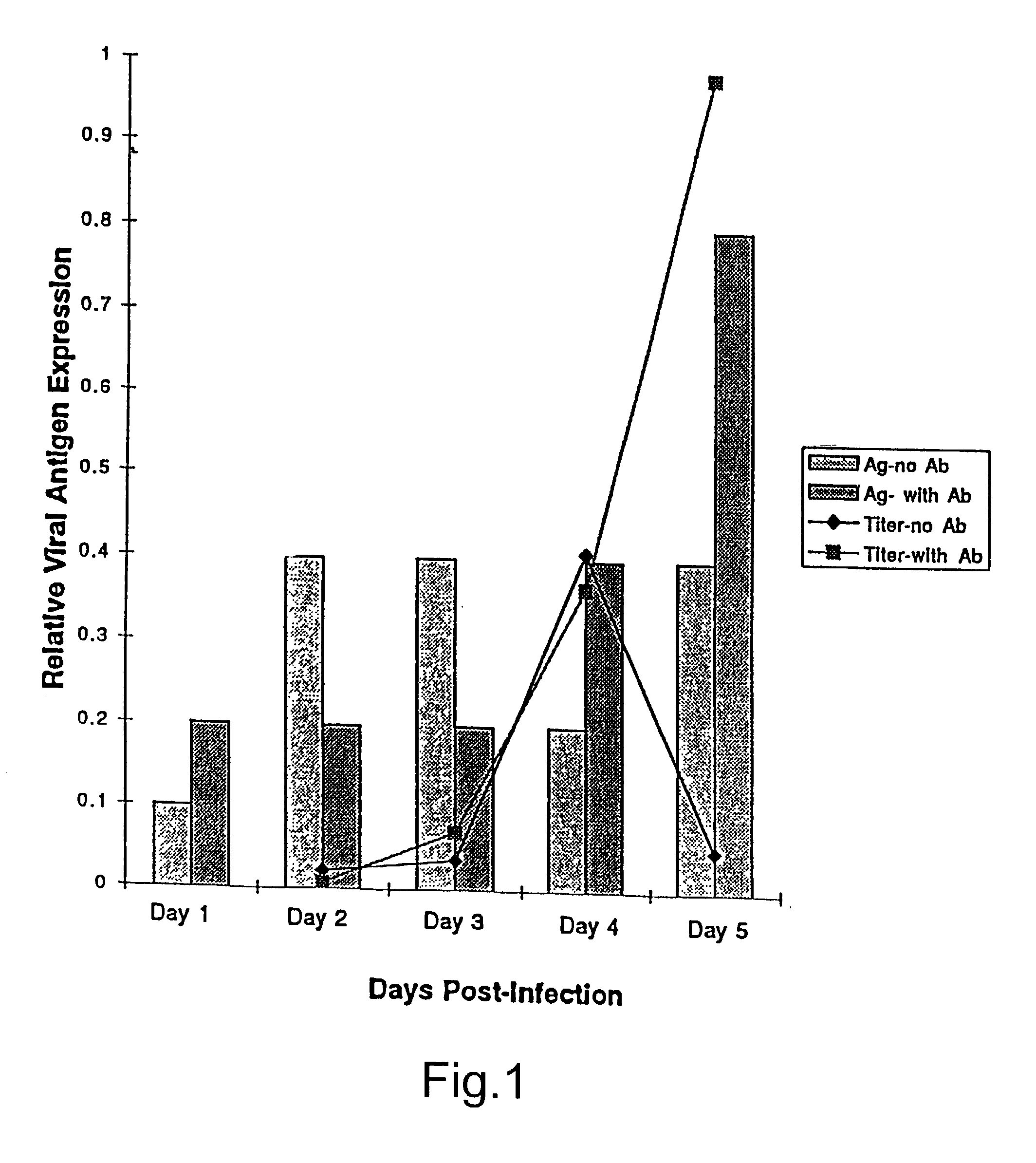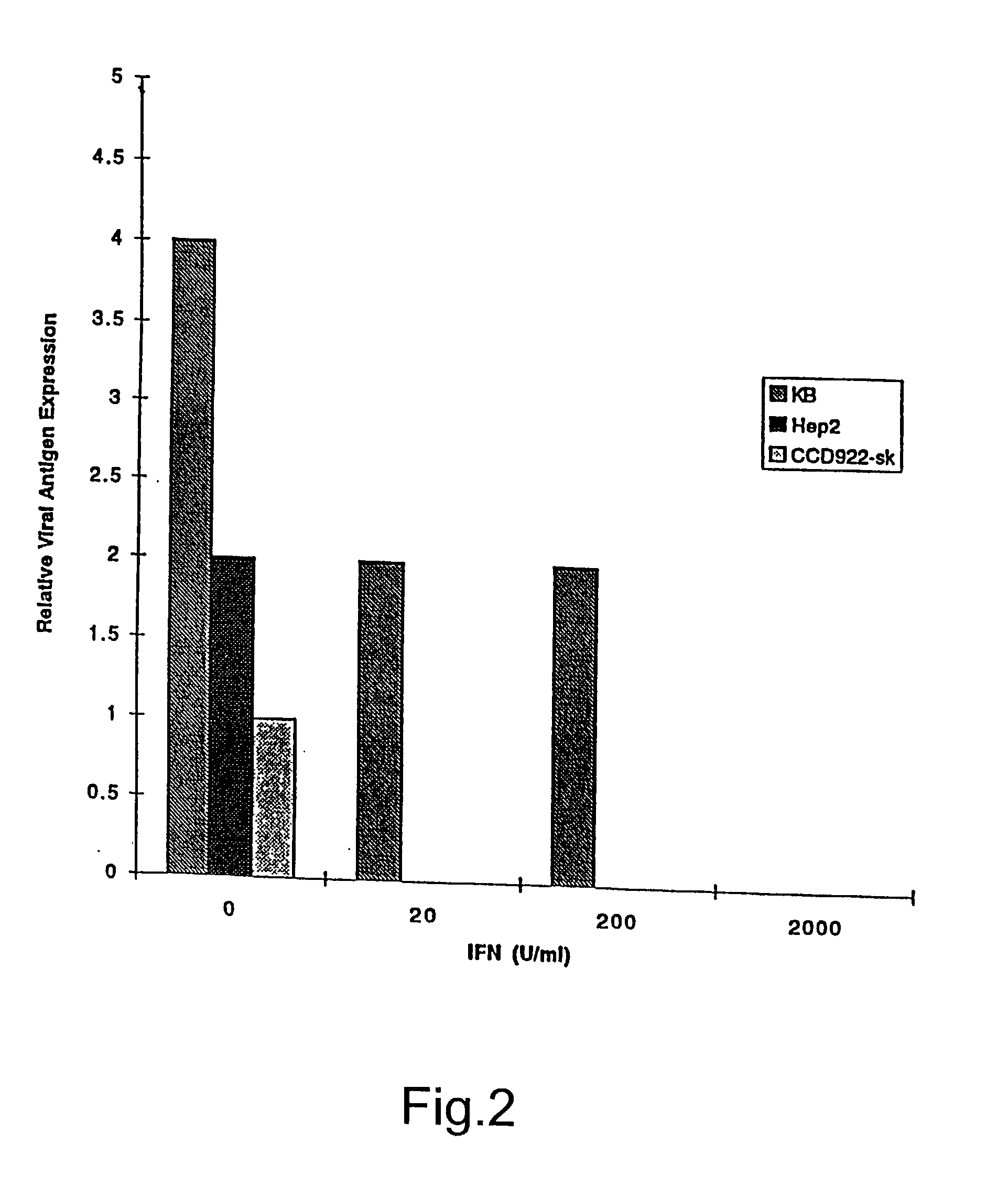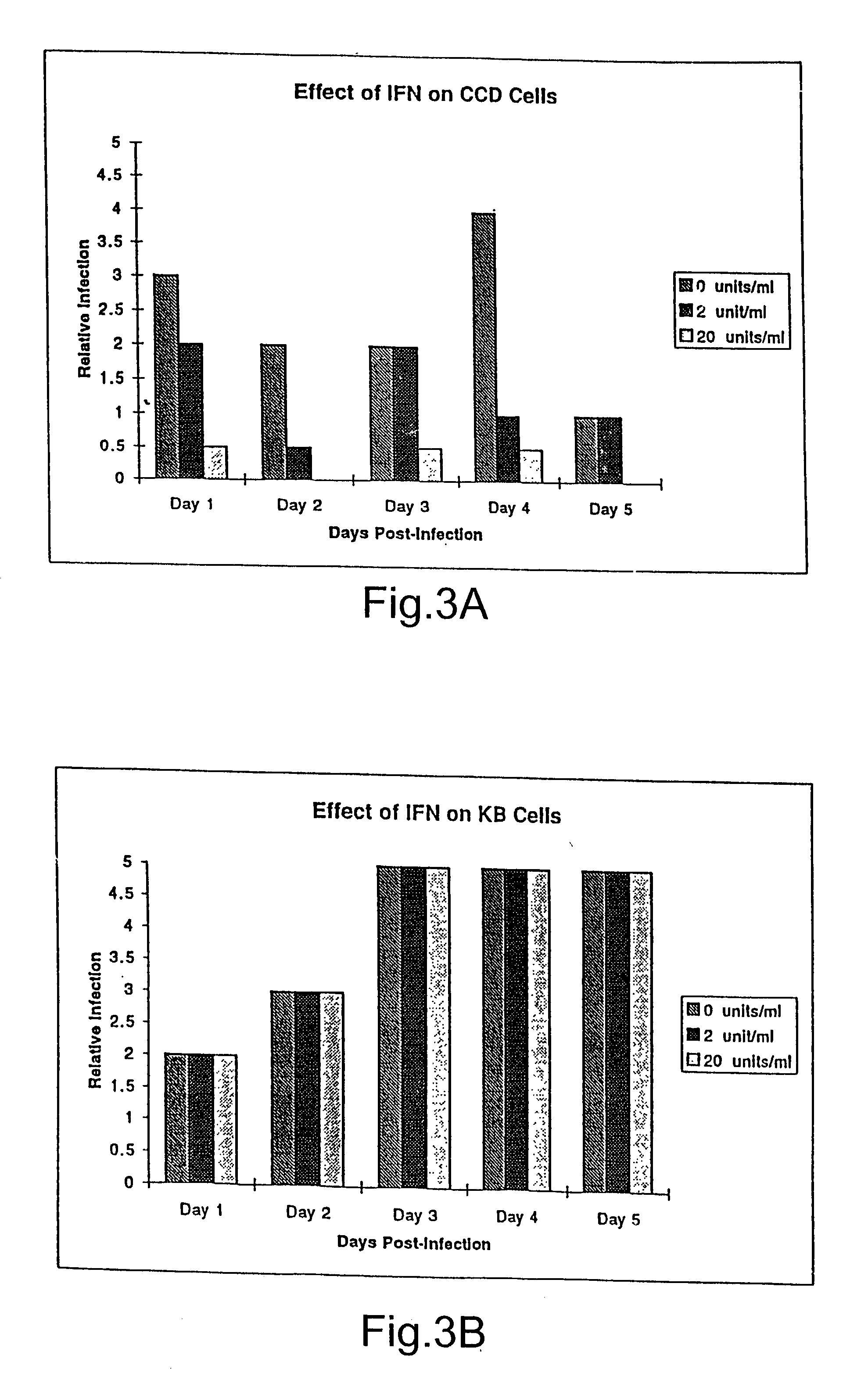Treatment of neoplasms with viruses
a virus and neoplasm technology, applied in the field of virus treatment of neoplasms, can solve the problems of unsatisfactory treatment, unfavorable early detection of cancer, and much less effective cancer treatment, including chemotherapy and radiation
- Summary
- Abstract
- Description
- Claims
- Application Information
AI Technical Summary
Benefits of technology
Problems solved by technology
Method used
Image
Examples
example 2
[0203] Use of PPMK107 for the Intratumoral Treatment of Human Tumor Xenografts (5 mm) in Athymic Mice
[0204] Athymic mice were injected intradermally with 10 million human tumor cells. After tumors reached a size range from between 5 and 10 mm, a single injection of PPMK107 (at a dose of 3.times.10.sup.8 PFU) or saline was given. Almost all tumor types exhibited a rate of complete or partial regression of 50% to 100% (see Table 7) in mice treated with PPMK107. The one exception is the case of the U87MG experiment (experiment I): Although only one of 9 tumors treated with PPMK107 completely regressed, two more virus-treated tumors showed regression of 32% and 20% and two more virus-treated tumors had slower growth than all 8 tumors treated with saline control. Tumor regression was virtually absent in the saline control treated tumors: In all of these experiments (A through I listed in Table 7) only one of 73 control tumors showed regression. These results indicate that diverse tumor t...
example 3
[0206] Use of PPMK107 for the Intravenous Treatment of Human Tumor Xenografts (5.5 mm) in Athymic Mice
[0207] Athymic mice were injected intradermally with 10 million human HT1080 fibrosarcoma cells. After tumors reached a size range from between 5 and 8 mm, a intravenous injection(s) of PPMK107 or saline were made. As shown in Table 8, at the highest virus dose level (1.times.10.sup.9 PFU) complete tumor regression was seen in all seven mice. Single injections of 3.times.10.sup.8 and 6.times.10.sup.7 resulted in regression rates of over 90%. While a single IV injection of 3.times.10.sup.8 only a 55% rate of tumor regression, three IV injections at this dose level yielded a 100% rate of response. Mice treated with IV saline exhibited no evidence of tumor regression. These results indicate that subcutaneous HT1080 tumors are very responsive to IV treatment with PPMK107.
8TABLE 7 PPMK107 intratumoral treatment of subcutaneous human tumor xenografts (<10 mm and <5 mm) in athymic mice Com...
example 4
[0209] First Experiment Using PPMK107 for Intratumoral Treatment of Large A375 Melanoma Xenografts in Athymic Mice
[0210] Athymic mice were injected intradermally with 10 million A375 human melanoma cells. Ten days later, tumors of various sizes were treated with a single injection PPMK107 (doses of 3.times.10.sup.8, 9.times.10.sup.8, and 1.5.times.10.sup.9 PFU) or saline. For those tumor with a single largest dimension of 10 to 11 mm, all nine completely regressed in response to intratumoral treatment with these doses of PPMK107, while of those tumors with a single largest dimension of 8 to 9.5 mm, twelve out of 24 completely regressed in response to virus therapy (P<0.008; Table 9, section A). No tumor regression was seen in any mouse treated with saline.
[0211] These same tumors when sorted by tumor volume also indicated a high percentage of complete regression in those of larger tumor volume. In response to these doses PPMK107, complete regression occurred in 14 out of 17 tumors w...
PUM
| Property | Measurement | Unit |
|---|---|---|
| size | aaaaa | aaaaa |
| volume | aaaaa | aaaaa |
| size | aaaaa | aaaaa |
Abstract
Description
Claims
Application Information
 Login to View More
Login to View More - R&D
- Intellectual Property
- Life Sciences
- Materials
- Tech Scout
- Unparalleled Data Quality
- Higher Quality Content
- 60% Fewer Hallucinations
Browse by: Latest US Patents, China's latest patents, Technical Efficacy Thesaurus, Application Domain, Technology Topic, Popular Technical Reports.
© 2025 PatSnap. All rights reserved.Legal|Privacy policy|Modern Slavery Act Transparency Statement|Sitemap|About US| Contact US: help@patsnap.com



